Expert’s Rating
Pros
- Very good performance
- Super-fast charging
- Gorgeous OLED display
- Strong main and selfie cameras
Cons
- Poor supporting cameras
- Underwhelming battery life
- Cluttered software
Our Verdict
The Poco F6 Pro offers a lot for relatively little money, with performance and charging speeds both real highlights. But there’s no clear reason to buy it over mid-range rivals, while most people will be just as happy with the cheaper Poco X6 Pro.
If you’ve never heard of Poco, you’re certainly not alone.
The Chinese company began life as a sub-brand of Xiaomi back in 2018, before becoming an independent firm two years later. However, it retains deep ties to its former parent company, including using the same HyperOS software on its phones.
Poco has never released what most people would define as a flagship smartphone, choosing instead to offer the best possible experience on a more affordable device.
The Poco F6 Pro continues that tradition, offering several high-end features yet retaining a mid-range price. Does that make it a no-brainer if you’re shopping around this price point? Yes, but only if you have a very specific set of requirements.
Design & Build
- Attractive glass back
- IP54 water and dust resistance
- Impressive haptics
The Poco F6 Pro is one of the best-looking phones I’ve ever tested. That’s not an exaggeration – the frosted glass on the white model I tested looks surprisingly stunning in person.
Usually, I don’t like white-backed phones due to their tendency to quickly accumulate dirt, but the F6 Pro still looked good as new after a week of testing. I imagine the same will be true of the black version, which is your only other colour option.
It feels like a shame to cover the phone with a case, though you might need the extra grip it provides. Without it, I was worried about the phone falling off a table or out of my pocket.
The silicone case included in the box is above average, adding the usual extra protection while looking good in the process.
However, even without it, durability isn’t a major concern. Unlike most glass-backed phones, I’m confident that the F6 Pro would survive any of the bumps and drops you might associate with everyday usage.
The phone isn’t exactly lightweight at 209g, but it’s not too heavy and some weight adds to the premium feel.
The Poco F6 Pro is one of the best-looking phones I’ve ever tried
Of course, you’ll also find glass on the display. It feels relatively robust, but it’s not a specific Gorilla Glass version for toughness. As a result, I’d recommend you leave the pre-applied screen protector on for as long as possible – it doesn’t affect the under-display fingerprint sensor.
The Poco F6 Pro also has an IP54 rating, meaning it’s mostly protected against dust but can only survive splashes of water. It’ll be fine on the beach or if you get caught in the rain, but don’t drop it in a swimming pool.
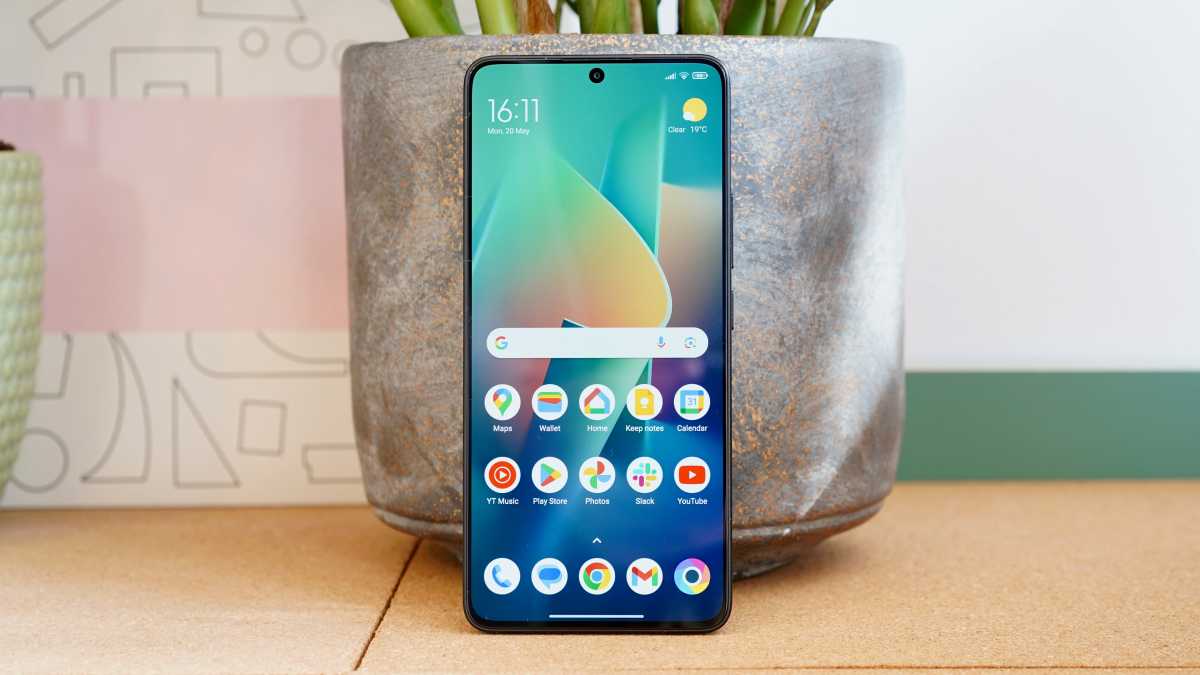
Jon Mundy / Foundry
It’s a key downgrade compared to the IP68 found on many flagship phones, but also a step down from the IP64 on the regular Poco F6.

Anyron Copeman / Foundry
Overall, the curved edges of the device make it easier to hold than some other big smartphones.
It’s also worth mentioning the vibration motor here, which offers subtle clipped haptic feedback while typing, moving between apps and charging. However, it’s off by default, so make sure you enable it in settings.
Screen & Speakers
- 6.67-inch, 1440p OLED
- 120Hz, but not LTPO
- Dual stereo speakers
The display on the Poco F6 Pro is almost as good as any flagship phone. It’s a 6.67-inch AMOLED panel, complete with high WQHD+ (3200×1440) resolution.
That’s higher than many flagships, though you will have to manually enable it in settings. Even the default FHD+ offers great detail and clarity, but the full resolution takes it to the next level.

Anyron Copeman / Foundry
And as an OLED panel, you get rich, vibrant colours and deep blacks. That makes it particularly well-suited to watching videos and gaming, but all types of content look great.
That applies even in bright outdoor environments, where a dedicated ‘Sunlight mode’ enables an impressive maximum brightness of 712 nits by my measurement with a colorimeter. I had no problems with visibility regardless of the situation, which can’t be said for all phones.
The display on the Poco F6 Pro is almost as good as any flagship phone
Just like most flagships, you also get a 120Hz refresh rate. However, the F6 Pro lacks LTPO technology, meaning it can’t drop down to 1Hz to preserve battery life. Instead, you can manually set it to 60- or 120Hz, or switch between the two in the ‘default mode’.
This is by no means a dealbreaker, but the F6 Pro could do with some extra battery life (more on that later).
Within the screen, you’ll find an optical fingerprint sensor. Despite a relatively small target area, I found it to be easy to set up and generally fast and reliable. It’s also much more secure than the face unlock, which uses only the front-facing camera here.
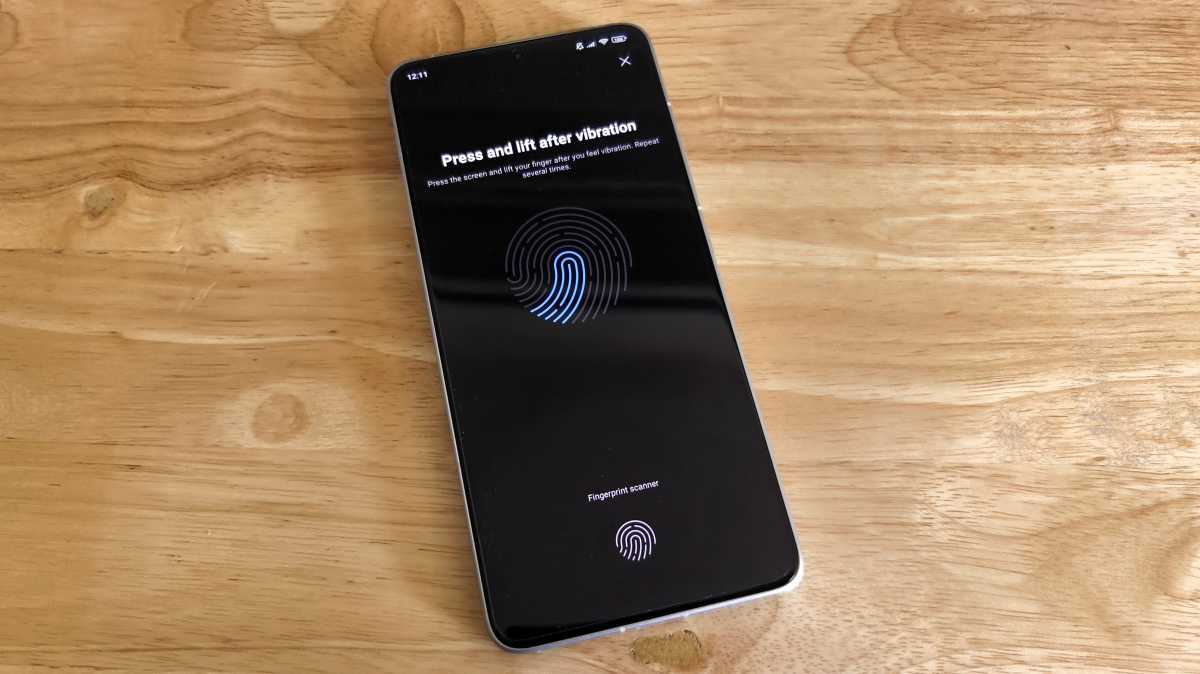
Anyron Copeman / Foundry
In terms of audio, the device boasts the usual combination of a single downward-firing speaker the earpiece for a stereo setup.
The sound is entirely unremarkable, offering decent clarity but lacking any of the bass required to make music feel immersive. Calls are very clear, though.
Specs & Performance
- Snapdragon 8 Gen 2 chipset
- Superb all-round performance
- Dual-SIM, but no expandable storage
The F6 Pro is powered by the Snapdragon 8 Gen 2 chipset. This isn’t Qualcomm’s latest and greatest – that award goes to the 8 Gen 3 at the time of writing – but it’s a smart move by Poco.
Remember, this is the same chip found in many of 2023’s best Android phones, including the Samsung Galaxy S23 Ultra, OnePlus 11 and Xiaomi 13 Pro. Performance is a key strength of all Snapdragon 8 Gen 2 phones, and that’s no different here despite its age.

Anyron Copeman / Foundry
With an impressive 12- or 16GB of RAM (my review unit has the latter), you can expect superb performance in pretty much any scenario. If your daily usage is anything like mine, consisting of web browsing, messaging, emails, social media, video streaming and taking photos, the F6 Pro handles it all with ease.
You can expect superb performance in pretty much any scenario
Further evidence of this can be found while gaming. I tried three of the most demanding titles on the Play Store in Genshin Impact, PUBG Mobile and Asphalt 9: Legends. Gameplay remained smooth and responsive throughout – it was indistinguishable from the Snapdragon 8 Gen 3 phones I’ve tried.
I did notice some slight slowdown when quickly switching between apps, but that seems to be more of a software issue than a lack of power.
Poco F6 Pro benchmarks
While there’s no support for expandable storage (its dual-SIM only), you still get plenty of choice with regards to internal storage. The F6 Pro is available with either 256GB, 512GB or 1TB of space.
Even the smallest capacity will be enough for most people, though it’s worth noting that around 28GB is taken up by system files which cannot be uninstalled.
The Snapdragon 8 Gen 2 chip supports 5G and it’s joined in the connectivity department by Wi-Fi 7, Bluetooth 5.3 and NFC (for Google Pay). You even get an IR blaster, allowing you to control your TV (and other devices) from your phone which can be very handy.
Cameras
- Strong 50Mp main camera
- Solid 16Mp selfie camera
- Poor supporting rear lenses
Judging by the back of the Poco F6 Pro, you’d think it’s all about the cameras. The rear module takes up around a quarter of the back, though the setup here isn’t as impressive as it might seem on the surface.
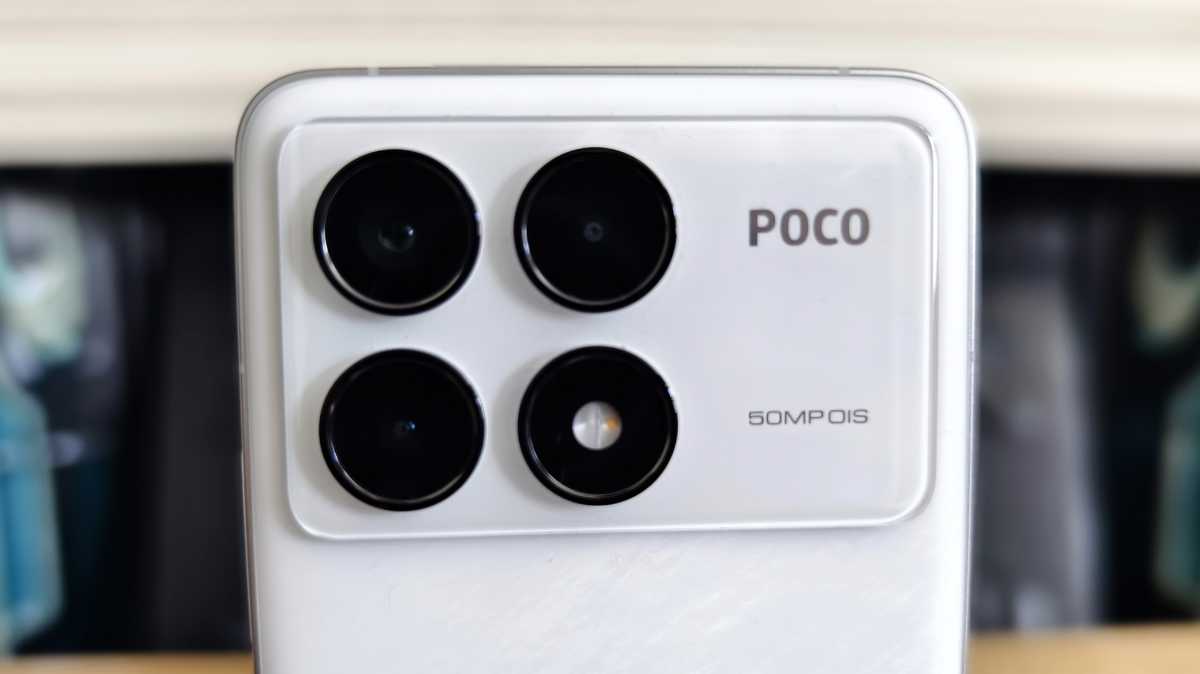
Anyron Copeman / Foundry
Firstly, one of the four rings is just a regular flash. And for the other three, there’s a huge variation in quality between them.
Let’s start with the 50Mp main lens, which is the most impressive by far. In good lighting, the primary rear camera takes impressive, true-to-life shots that are brimming with detail. Dynamic range and colour accuracy are both strong.
Unlike some mid-range phones, you can tap the shutter button and be confident that you’ll get a clear well-exposed picture. And the minimal shutter lag helped me capture the moment as soon as I saw it.
In good lighting, the primary rear camera takes impressive, true-to-life shots that are brimming with detail
This is the camera you’ll be using for portrait-style shots, which are a pleasant surprise. Edge detection isn’t perfect, but it creates a realistic background blur which can be adjusted both before and after you take the shot.
The main lens is well-suited to shots of architecture and landscapes too, though you might be tempted to switch to the 8Mp ultrawide for the latter to fit more in.
I wouldn’t bother. The decline in quality is so steep that it outweighs any benefits from the wider field of view. Exposure, colour accuracy and dynamic range are all severely compromised, to the extent that I was reluctant to ever use it.

Anyron Copeman / Foundry
In darker environments, the long-exposure night mode comes into its own. I was impressed with hjow it brightened a dimly lit concert hall while still preserving key details and without looking artificial.
You might’ve noticed I haven’t mentioned the third rear camera yet. That’s because it’s a 2Mp macro, which makes an all-too-common appearance on cheaper phones to cheaply bump the number of cameras up. It’s functionally useless – even close-up shots are still blurry.
Sadly, that means there’s no room for a telephoto camera, so zoomed shots are entirely reliant on digital zoom (up to 10x). At anything beyond 2x, the shots are so blurry that they’re practically unusable.
The good news is that the 16Mp front-facing camera is much more impressive. Provided the lighting is good, selfies are crisp and well-exposed. Portrait mode here is just as good as the rear camera, too.
It’s another case of a mid-range phone only having two good cameras.
The Poco F6 Pro supports video capture up to 4K at 30fps, though the default 1080p at 30fps will be just fine for most people. Footage looks decent, with optical image stabilisation (OIS) on the main lens ensuring it remains mostly steady with some movement.
However, the audio side here was very disappointing. In videos I took of a concert, the singer’s voice sounded washed out and lost a lot of the impact that was very much there while listening in person. Compared to one my friend took with his iPhone 14, the results were night and day.
Battery Life & Charging
- 5000mAh battery
- Slightly underwhelming battery life
- Super-fast 120W wired charging
The Poco F6 Pro is equipped with a 5000mAh battery. That’s a common capacity for a modern smartphone – even one with such a large, high-resolution display.
Sadly, battery life isn’t quite as good as I was hoping. You will be able to get through a full day on a single charge most of the time, but not without worrying about it in the evening or enabling battery saver mode.
Battery life isn’t bad per se, but I was expecting better from the Poco F6 Pro
During a full day of testing the phone in Dubai, I left my hotel room at 9am with a full battery and got back around 12 hours later with just 20% remaining. While high brightness, GPS and mobile data were all enabled, I was only actually using the phone occasionally, which is a concern.
Our PCMark battery benchmark, which aims to simulate real-world tasks, recorded 10 hours and 47 minutes. That’s around average, albeit only at FHD+ resolution and with adaptive refresh rate turned on.
Battery life isn’t bad per se, but I was expecting better from the Poco F6 Pro.
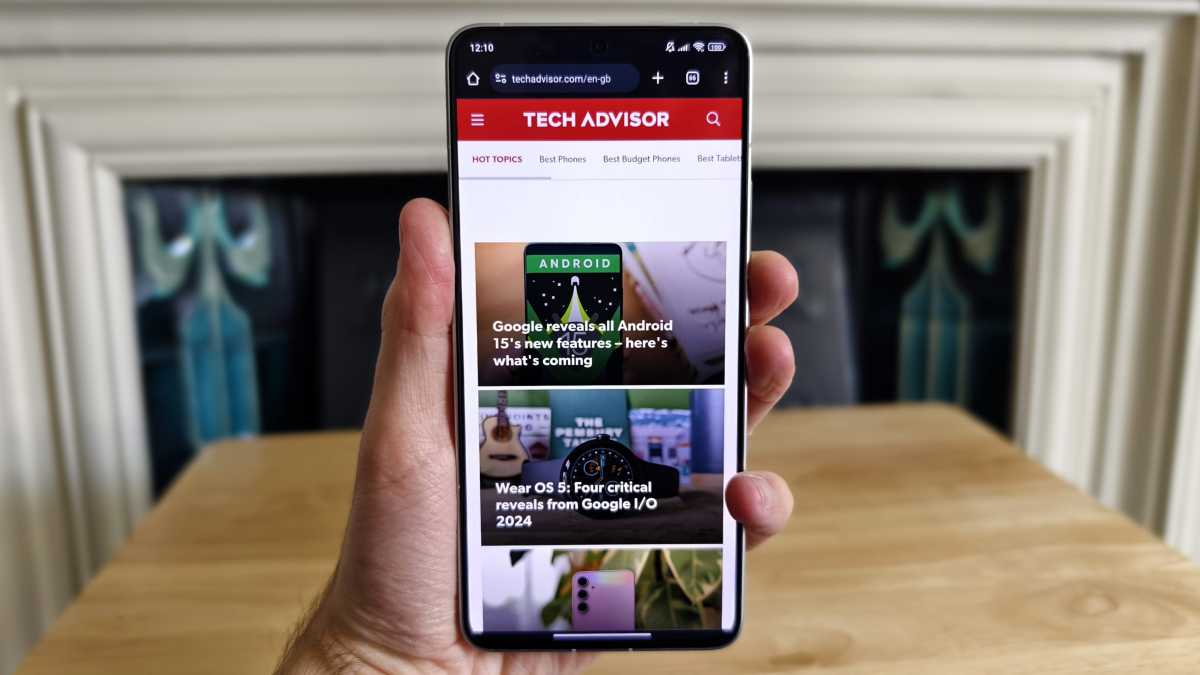
Anyron Copeman / Foundry
However, charging is almost as good as it gets. Not only does the phone support 120W fast charging, but the necessary adapter is also included in the box. It went from 0-65% in just 15 minutes and was fully charged in under half an hour – outpacing the likes of Samsung and Google by miles.
There’s no wireless charging, but with these wired speeds, I really didn’t miss it.
Software & Apps
- HyperOS skin over Android 14
- Lots of bloatware
- 3 year of OS updates, 4 years of security updates
While the Poco F5 Pro ran MIUI 14 out of the box, the F6 Pro switches it out for HyperOS.
However, this is just a rebranding of Xiaomi’s Android skin, and frustratingly little has changed.
It is at least now based on Android 14 (the latest version at the time of writing), but Xiaomi’s tweaks to the experience are a step back for ease of use compared to phones from the likes of Google, Samsung and OnePlus.
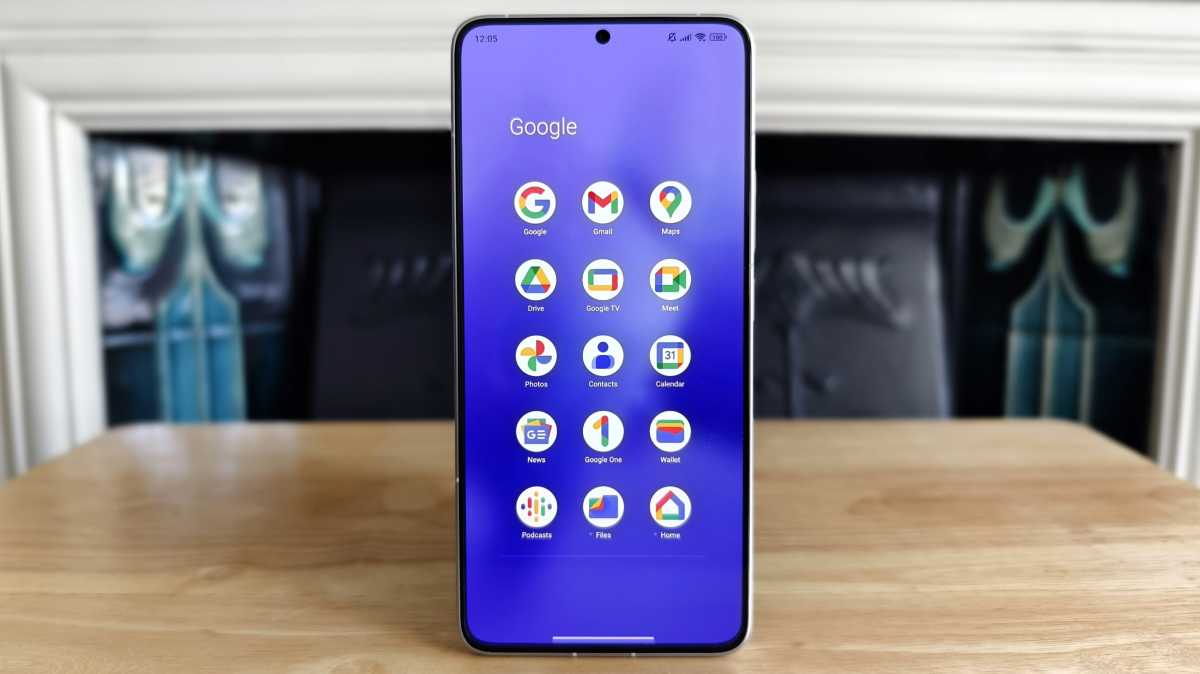
Anyron Copeman / Foundry
Undoubtedly the most annoying thing is the bloatware, with dozens of extra pre-installed apps that you’ll probably never use. It doesn’t seem right that the likes of Block Puzzle Guardian, Bigo Live, Tile Fun and many others are added, whether you want them or not.
Most can be uninstalled, but many of Xiaomi’s own stock apps can’t be removed, despite many of them being duplicates of the ones superior Google makes.
Elsewhere, with every wallpaper you choose, Xiaomi asks to add a carousel of news articles that you probably don’t care about. The bright, vivid colours and split notification shade (notifications from left, quick settings from right) take some getting used to.
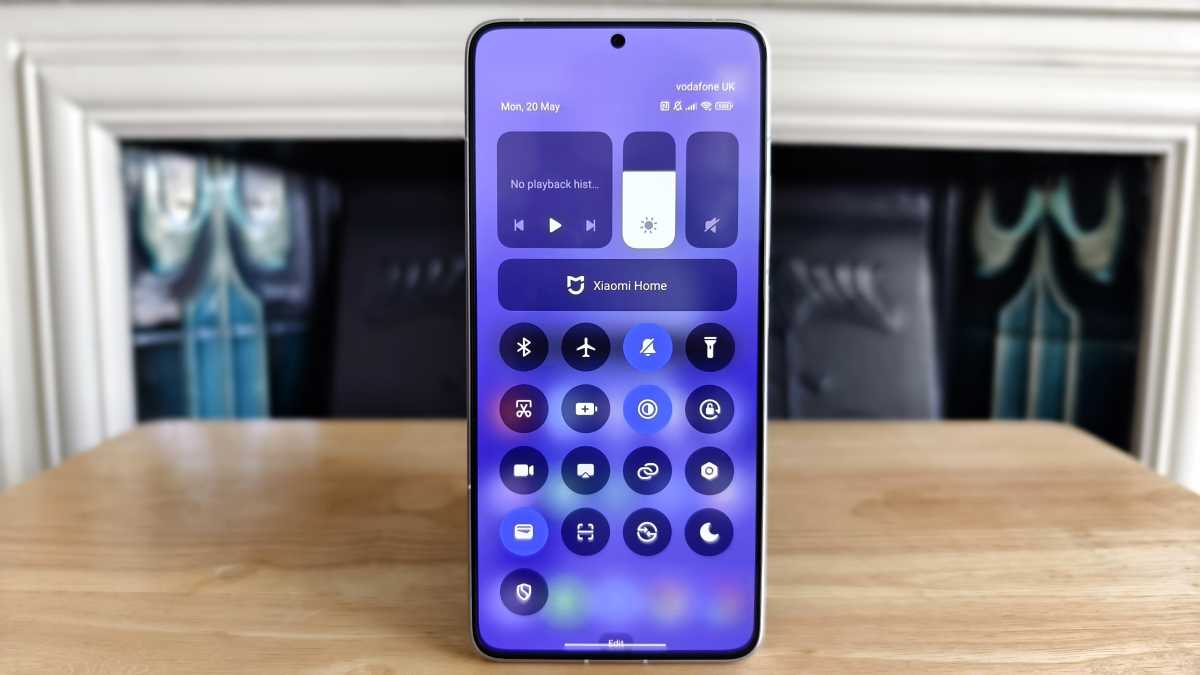
Anyron Copeman / Foundry
HyperOS is by no means unusable, and with some tweaking, you can get it to look and perform how you want it to. But the F6 Pro doesn’t have the out of box slick user experience that you get with some other Android phones.
Although AI is all the rage right now, the F6 Pro doesn’t come with anything standout at launch. However, things like subtitles, smarter gallery search, removal of background objects in photos, generative fill expanded images and generated portraits are on the way.
Poco is supporting the phone with three years of OS updates and four years of security patches, meaning it should get Android 17 and be safe to use until 2028.
The F6 Pro doesn’t have the out of box slick user experience that you get with some other Android phones
That’s not bad, but Samsung and Google both offer more on their mid-range phones, with the £499 Pixel 8a getting seven years of both.
Price & Availability
At launch, the Poco F6 Pro starts at £499.90 in the UK. That gets you a model with 12GB of RAM and 256GB of storage, though there are also versions with 12GB/512GB (£549.90) and 16GB/1TB (£599.90) if you’d prefer.
It’ll be available to buy outright from Xiaomi, Poco and Amazon, with early bird offers dropping the price of all three models by £50 until 30 May. But there’s nowhere to get one on contract, so you’ll have to pair it with a SIM-only deal.
And as usual for Poco phones, it won’t be available in the US.
It’s very much a mid-range phone, though more expensive than the £399.90 regular Poco F6 that launched alongside it.
However, there are some superb options at this price point, including the Google Pixel 8a (from £499), Xiaomi Redmi Note 13 Pro+ (from £449/€499) and Samsung Galaxy A55 (from £439). Then there’s Poco’s own X6 Pro which is just £339.
For most people, all three of the above will offer a better all-round experience.
Should you buy the Poco F6 Pro?
Possibly, but only if performance, display and charging speeds are the most important things to you.
The Poco F6 Pro excels at all three, matching or even surpassing most other mid-range phones in these areas.
However, impressive main and selfie cameras are let down by poor supporting lenses, while battery life itself could be better.
You’ll also have to contend with Xiaomi’s HyperOS Android skin, which is an acquired taste to say the least.
The F6 Pro offers a lot for your money, but it’s not a great all-round phone, making it difficult to recommend to most people.
Specs
- Qualcomm Snapdragon 8 Gen 2 chipset
- 12/16GB LPDDR5X RAM
- 256/512GB UFS 4.0 storage
- 6.67-inch, 3200×1440 OLED display, 120Hz
- 50Mp, f/1.6 main camera with OIS
- 8Mp, f/2.2 ultrawide camera
- 2Mp, f/2.4 macro camera
- 16Mp selfie camera
- 5000mAh battery
- 120 wired charging
- 5G
- Dual stereo speakers
- Wi-Fi 7
- Bluetooth 5.3
- NFC
- Xiaomi HyperOS over Android 14
- 160.86 x 74.95 x 8.21mm
- 209g








/origin-imgresizer.eurosport.com/2024/05/23/3973867-80653048-2560-1440.jpg?w=150&resize=150,150&ssl=1)






